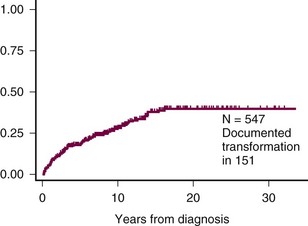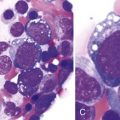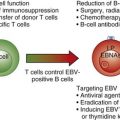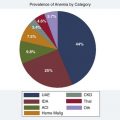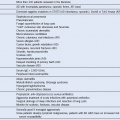Chapter 34 Clinical Manifestations, Staging, and Treatment of Follicular Lymphoma
Table 34-1 Initial Evaluation of Follicular Lymphoma
| Stage | Criteria |
|---|---|
| I | Involvement of 1 lymph node (I) or 1 extralymphatic organ or site (IE) |
| II | Involvement of 2 or more lymph nodes on same side of diaphragm (II) or localized extralymphatic organ or site and 1 or more involved lymph node on same side of diaphragm (IIE) |
| III | Involvement of lymph nodes on both sides of diaphragm (III) or same side with localized involvement of extralymphatic site (IIIE), spleen (IIIS), or both (IIIS+E) |
| IV | Diffuse or disseminated involvement of extralymphatic organ or tissues with or without lymph node enlargement |
Table 34-3 Factors Having Prognostic Significance in the FLIPI* and FLIPI2†
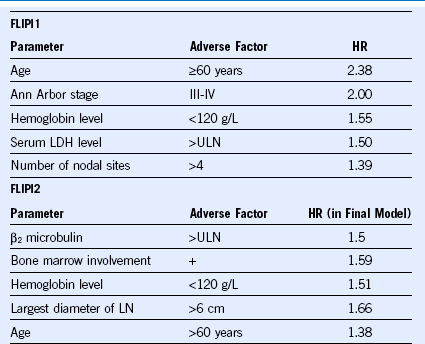
FLIP, Follicular lymphoma international prognostic index; HR, hazard ratio; LDH, lactate dehydrogenase, ULN, upper limit of normal.

Data from Federico M, Bellei M, Marcheselli L, et al: Follicular lymphoma international prognostic index 2: A new prognostic index for follicular lymphoma developed by the international follicular lymphoma prognostic factor project. J Clin Oncol 27:4555, 2009.
Stay updated, free articles. Join our Telegram channel

Full access? Get Clinical Tree



